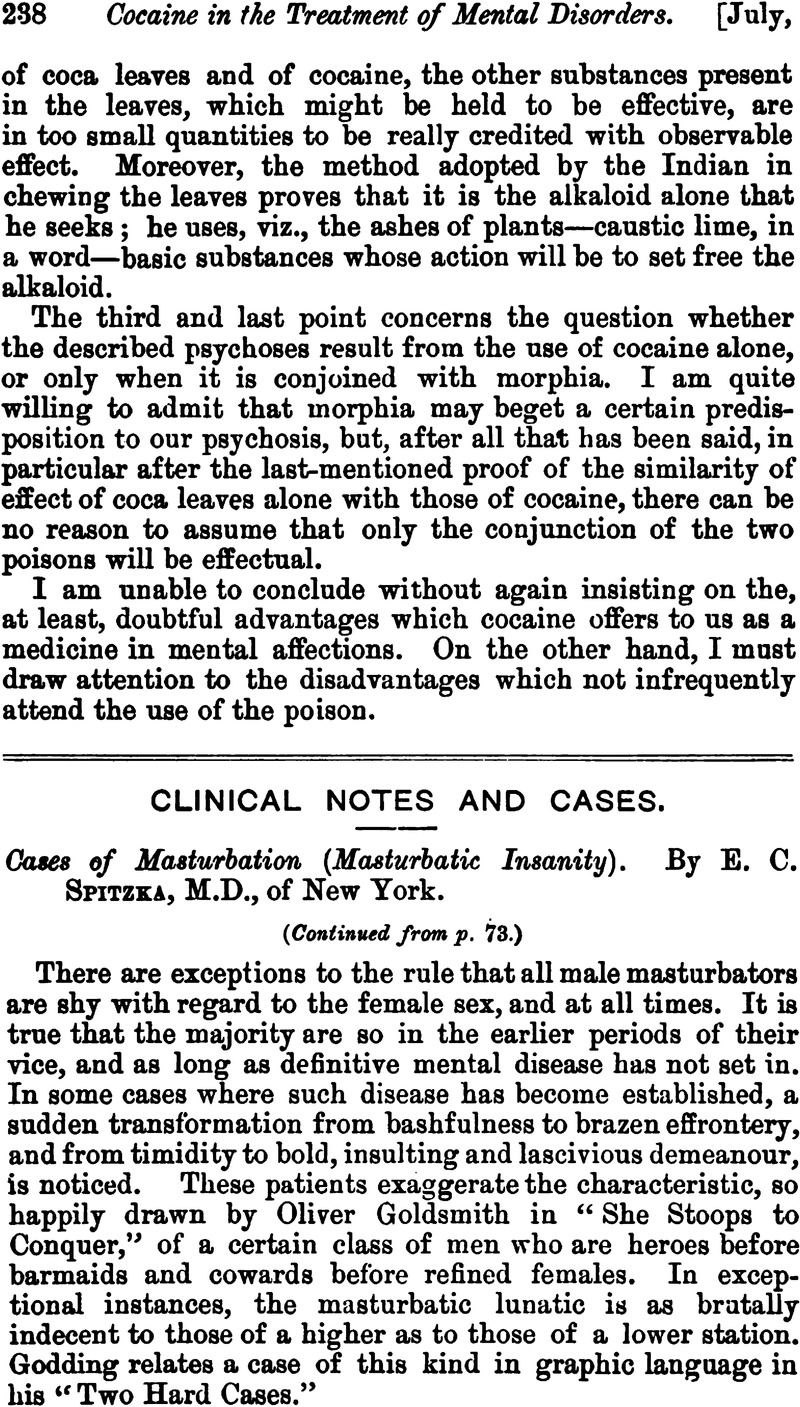No CrossRef data available.
Article contents
Cases of Masturbation (Masturbatic Insanity)
Published online by Cambridge University Press: 19 February 2018
Abstract

- Type
- Part I.—Original Articles
- Information
- Copyright
- Copyright © Royal College of Psychiatrists, 1887
References
* See “Proceedings of the Society of Medical Jurisprudence and State Medicine,” Vol. 2., pp. 15–20; reprinted from the “Am. Journal of Neurology and Psychiatry.”Google Scholar
† He made some inventions, which were exhibited before the Society of Medical Jurisprudence, which be had tried to introduce to notice by means of doggerel poetry reproduced in the paper referred to.Google Scholar
* “Thierärztliche Mittheilungen,” August, 1884.CrossRefGoogle Scholar
† The case of acute loss of the knee-jerk is not classified herewith. The disappearance as well as the return of the jerk was noted to be marked by a stage in which it was excessive enough, but halting, as it were, in the “go-back.”Google Scholar
* This was first observed in the 15th year, and had slowly increased to the 35th, the period of the examination.Google Scholar
† I have been unable to find a reference to two cases described, either in 1860, 1870, or 1871, of young men who had been extreme onanists, and suffered from the same pain. A fibroid growth was found in the cerebellum of one of them, but whether it was regarded as an accidental coincidence or not I have forgotten.Google Scholar
‡ According to Dr. H. G. Lyttle, a genito-urinary specialist, stricture is developed in some onanists, so that we cannot be positive in our interpretation of their bladder-symptoms.Google Scholar
§ Schiele, A., “Arohiv für Augenheilkunde,” 16., p. 145, believes that asthenopia, as well as consequent limitation of the visual field, may be due to exhaustion of the gray matter in the occipital lobes as a result of functional as well as of organic disease. It is noteworthy that in Graves a symmetrical lesion should have been found in this very district.Google Scholar
‖ The palpebral aperture often becomes narrow, the brows overhang in connection with the habitual corrugation of the eye-brows, and the tout-ensemble is not unlike the expression of a vicious baboon, a resemblance heightened in some by pouting lips and a sparse irregular growth of hair on the chin.Google Scholar
* Kiernan describes the same patient in two papers on trophic disturbances, “Journal of Nervous and Mental Diseases,” 1878, and “Alienist and Neurologist,” Vol. vii., p, 474, as one of hebephrenia, and inclines to attribute the trophic changes to a deep abscess, which might have involved the sympathetic The pistol-shot sensation in the head which the patient complained of occurred while he was indulging in his unnatural practice.Google Scholar
* “Allgemeine Zeitschrift für Psychiatrie,” Vol. 41, Heft. 1, p. 26–27. Wills, in his paper on “Imperative Conceptions” (“Archiv für Psychiatrie,” xii.), states that of seven males suffering from them, four were onanists; of nine females but one was so addicted.Google Scholar





eLetters
No eLetters have been published for this article.